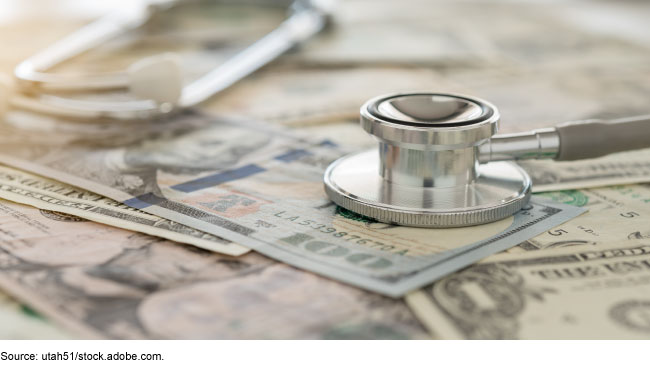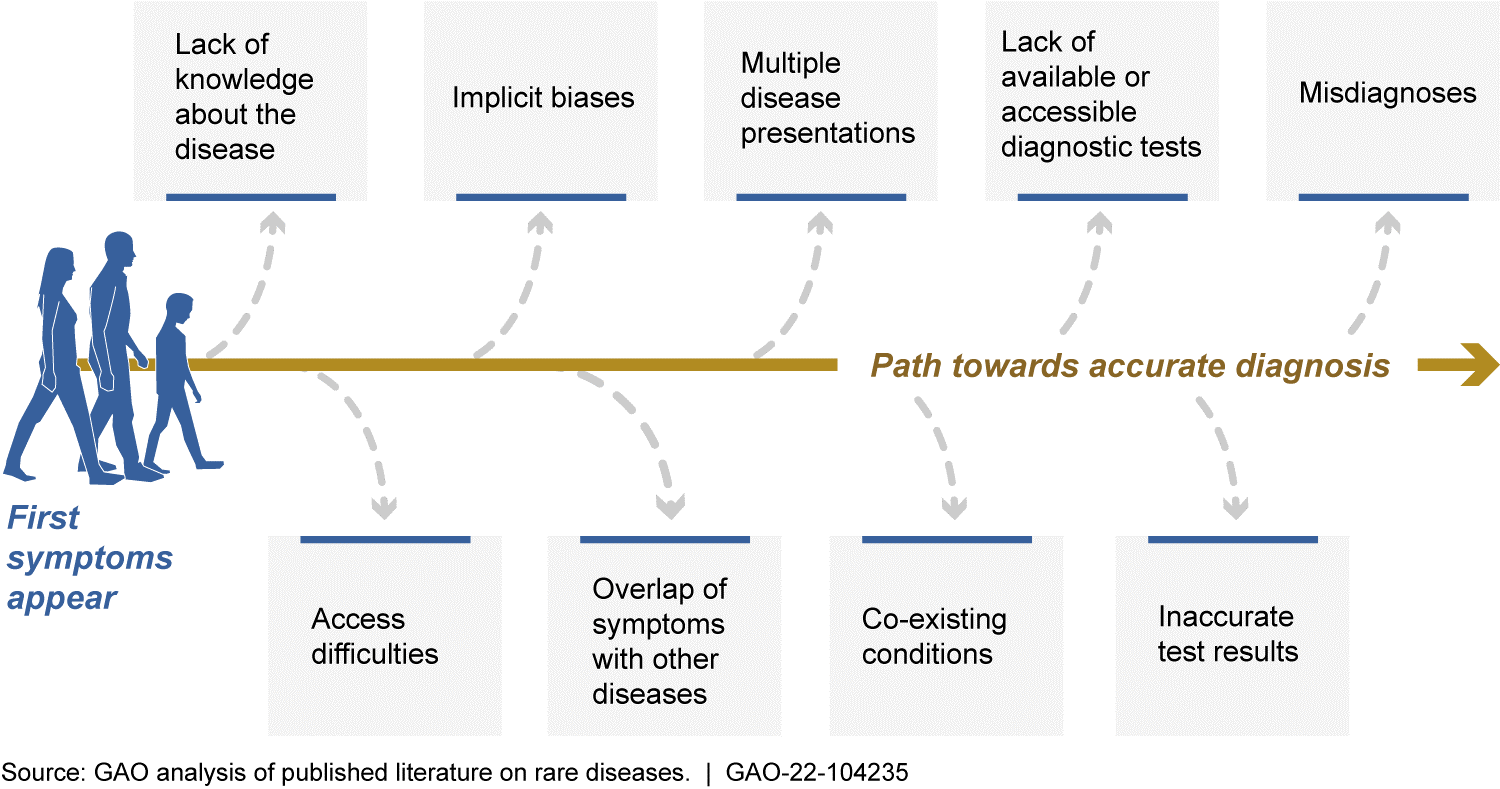Rare Diseases: Although Limited, Available Evidence Suggests Medical and Other Costs Can Be Substantial
Fast Facts
In the U.S., about 30 million people—half of them children—have a rare disease. Many of these diseases are chronic, worsen over time, and are life-threatening. It can take years of testing and misdiagnoses to get a correct diagnosis; in that time, a patient's health can get worse.
Partly due to the difficulty of diagnosing rare diseases, the costs related to them are hard to track. But, available research suggests those costs may be substantial.
One study estimated total 2019 U.S. costs for rare diseases at $966 billion—including direct medical costs (e.g., drugs, doctor visits) and other nonmedical and indirect costs (e.g., loss of income).

Highlights
What GAO Found
According to the literature GAO reviewed, diagnosis of any disease can be complicated, and diagnosis of rare diseases can be particularly difficult because of a variety of factors. (See figure.) Although some rare diseases may be detected quickly, in other cases years may pass between the first appearance of symptoms and a correct diagnosis of a rare disease, and misdiagnoses—and treatments based on them—occur with documented frequency. According to the literature GAO reviewed and GAO's interviews, those with undiagnosed, misdiagnosed, or untreated rare diseases may face various negative outcomes. For example, a person's health can suffer when appropriate, timely interventions are not provided or when interventions based on misdiagnoses cause harm. In addition, multiple diagnostic tests, medical appointments, and ultimately unwarranted interventions can add to the costs of the disease.
Examples of Factors That May Interfere with Accurate Diagnosis

Research on the costs of rare diseases is limited, in part because of the difficulty of diagnosing them. Nonetheless, the costs can be substantial, as indicated by available research from the U.S. and elsewhere and the experts, researchers, and organization officials GAO interviewed. These costs—to those with rare diseases, health care payers, the U.S. government, or a combination—can include direct medical costs (e.g., costs of outpatient visits or drugs), direct nonmedical costs (e.g., costs to modify one's home to accommodate a wheelchair), or indirect costs (e.g., loss of income or diminished quality of life). Peer-reviewed studies of specific rare diseases estimated costs for people with rare diseases that are multiple times higher than costs for people without those diseases. One recent study, which has not yet been peer-reviewed, estimated $966 billion as the total cost (including medical and other nonmedical and indirect costs) in the United States for an estimated 15.5 million people with 379 rare diseases in 2019.
The Department of Health and Human Services (HHS) provided technical comments on a draft of this report, which GAO incorporated as appropriate.
Why GAO Did This Study
By definition, few people have any specific rare disease. But there are many different rare diseases—about 7,000—and as a result, an estimated 30 million people in the United States have one or more of them. About half of those with a rare disease are children. Often genetic, many rare diseases are chronic, progressive (they worsen over time), and life-threatening. Relatively little is known about the costs of rare diseases, either individually or collectively.
The Joint Explanatory Statement for the Further Consolidated Appropriations Act, 2020, includes a provision for GAO to study the costs of rare diseases within the U.S. GAO examined, among other things, the challenges to diagnosing rare diseases and what is known about their costs.
GAO reviewed documents from two agencies in HHS—the National Institutes of Health (NIH) and Food and Drug Administration (FDA) and published literature, including studies on the costs of rare diseases in the United States and elsewhere published from 2000 through 2021. GAO also interviewed NIH and FDA officials; selected researchers and experts on rare diseases, health care, and health economics; and officials of organizations representing those with rare diseases. The organizations included two devoted to rare diseases in general and six representing those with a specific rare diseases or sets of related rare diseases.
For more information, contact at (202) 512-7114 or dickenj@gao.gov.
